A Scott Fly Rods Factory Tour
Scott Fly Rods has been a fixture in the fly fishing industry for over 40 years. Did you know that?
That is a pretty long lifespan for any business. In the grand scheme of things, they are still a pretty small company who has made a fairly substantial mark on the world of fly fishing.
You know what else? Scott still builds their fly rods much the same way they have built them 40 years ago. By hand.
Things that get the descriptor of “handmade” usually fall somewhere in-between craft fair items and the Japanese sword.
Now Scott fly rods are neither a craft fair trinket, nor are they a weapon used for felling one’s enemies on the field of battle. Much more useful than a doily and far more relevant than an ancient blade; the 40 years of craftsmanship that goes into any Scott fly rod may rival the craftsmanship of a Masamune blade.
That can be debated at some other time though.
Let’s talk about that “built by hand” moniker for a moment. In all honesty, I never gave it much thought. I have read or heard the “Handmade in Montrose, Colorado” 1000 before here in the shop. After so many times of hearing it, it lost its relevance to me. It was just another thing to say. A buzzword.
Fortunately, I was actually able to see what “Handmade in Montrose, Colorado” meant on a recent family trip north. The folks at Scott were kind enough to give me and my aspiring fly fisher of a son a tour of the Scott Fly Rod factory. What commenced was a throwback to the “How it’s made” shorts on Sesame Street (my favorite was crayons); but we go to witness it firsthand.
Let me back up for a second. Up until this past year, Scott was just another rod company in my mind. Sure they were made in Colorado, but fly rod companies are a dime a dozen. Right? Even though Duranglers has carried Scott Rods for many years; I personally never gave them much attention. All of that changed when I got some time behind the Scott Radian as well as the lineup of Scott two handers. I won’t bore you with the details here, you can read the reviews in the links. I have become a Scott fan in the last year.

This is a sheet of carbon, when baked and set it is extremely strong. This sheet is 1/10 the width of a human hair. These fibers are wrapped into the blanks along with graphite.
Back to the “Handmade in Montrose, Colorado”: these rods are truly being built one at a time, by hand. Any given rod goes through around 23 different sets of hands (sometimes more) and each person is putting their personal handiwork into every rod. Not to mention that is more than 23 points of quality control. This personal QC ensures tight tolerances on every component, ferrule, wrap and finish.
I believe that repetition builds confidence, and this is very evident in the rod building process at the Scott Fly Rods factory. Heck, their confidence in the process made it look downright easy. Cut, roll, bake, measure, trim, sand, fit, wrap, script, glue, dry, package, ship, fish. The process is pretty much like that. 40 years in the making, they have their process dialed.
I am sure if you asked them they would tell you they are still working on tweaking it to make it better though.
It’s hard to call Scott HQ a factory though. Nothing about this place speaks “industry”, “moving units”, or “bottom line”. It’s more like a workshop for craftsmen and craftswomen. Throughout the tour, I noticed a subtle undertone of severe pride in the work that each employee was doing. Our presence was obviously disrupting the ebb and flow of the process, but each employee we spoke to was more than happy to slow down and explain exactly what they were doing. Intentionally or unintentionally, each made an interesting point that was something like this: “the work I am doing at this station adds to the overall value and quality of these rods”. They don’t cut corners, they want the best possible result even if it costs a little more overhead.

Metal fly rod tapers which the graphite is wrapped upon to form a rod. These metals rods may date back to the very beginnings of Scott
Now I could go one for many more paragraphs on everything we witnessed at Scott rods. I could explain in detail every step in the process of building a fly rod. I am not going to do that because while the process is similar for every rod…it is also different. It’s all in the recipe.
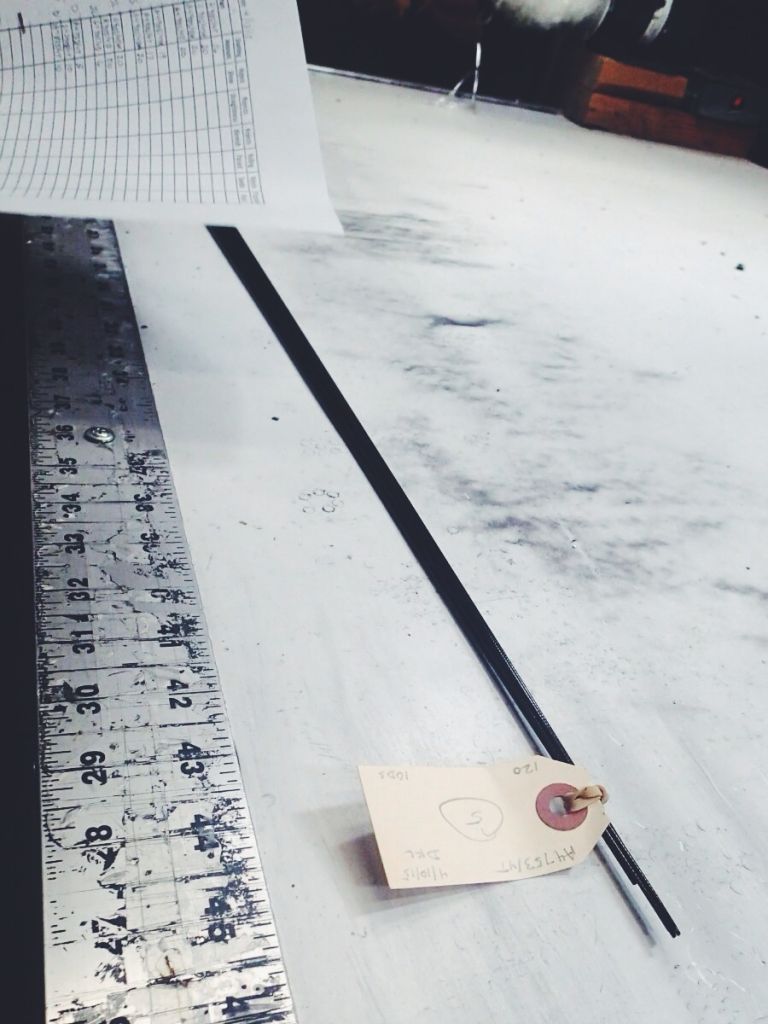
Measure twice, cut once. Fly Rod sections. This here is an A4, Scott’s price point rod. Of course, still completely built in Montrose, CO.
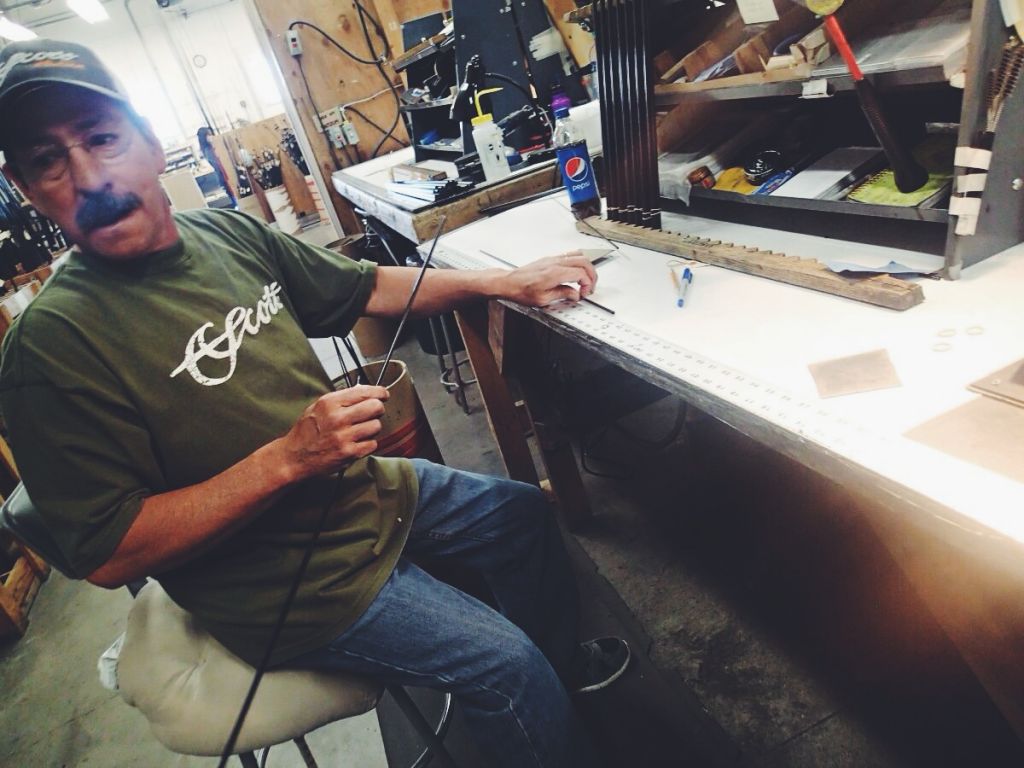
Assembling the rod once it has been cut to size and sanded to ensure proper fit and ferrule overlap.
Jim Bartschi (whom we didn’t get to meet) and the rod designers at Scott have a different recipe and formula for each rod. Everything starts out from sheets of graphite, carbon, or fiberglass. Those sheets are then cut (by hand) into the preferred length and angle. Each rod recipe calls for different lengths, cuts, and angles of graphite, carbon, or fiberglass. These sheets are then rolled onto metal rods that taper differently depending on the rod. The mixture of graphite and metal rod tapers determine the rod action.
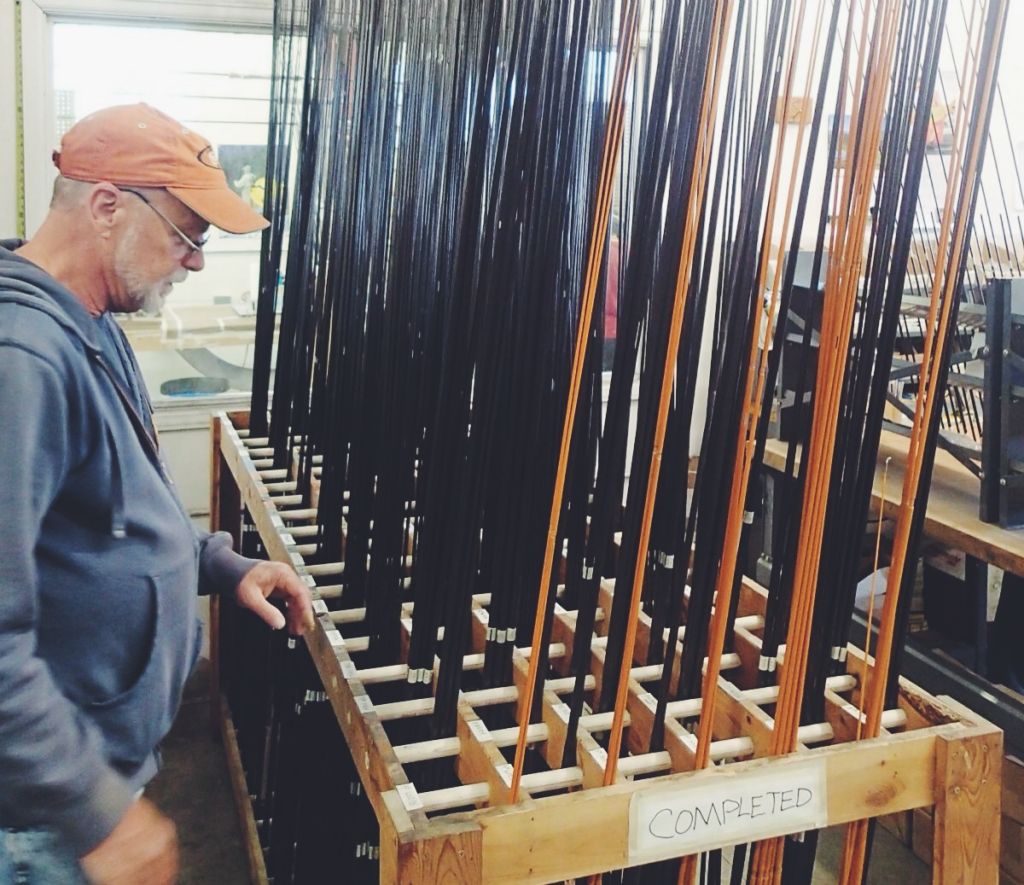
Assembled rods, awaiting their components. In the background is the flex-coat room. We were not allowed into this room for fear of bringing in any specks of dust. You don’t want that speck to fall into the flex-coat of a rod!
Fun fact: Scott keeps every one of these metal rod tapers that they have ever used. These are kept for a few reasons. One is to be able to look back on their previous rod designs to build upon that foundation for future rod designs. The other reason is so that they can build any graphite replacement piece for a customer should the need arise.
Once the materials are wrapped onto the metal rod, they are then baked to their preferred hardness with glues, the graphite is then removed from the rod and cut to length, and then assembled (by hand) into the rods we get to fish.
Another fun fact: Scott has on hand sections or entire rods from every rod they have built in recent memory (and some out of memory). These are kept for repairs to ensure they have what they need on hand when it comes to servicing their customers. Speaking of service, did you know they have a custom shop…
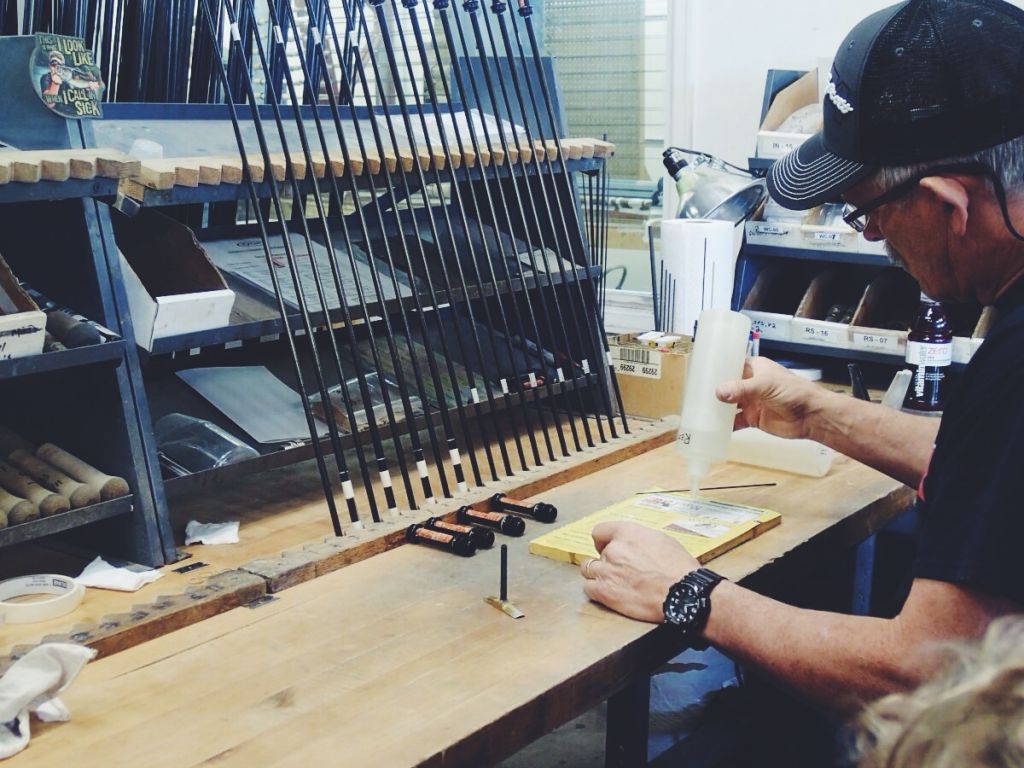
A craftsman assembling reel seats and cork grips onto the fly rod blank. In this case, a Scott Radian.
The custom shop is a pretty interesting aspect of Scott Fly Rods. They can customize the build of a rod for a customer’s specifications. They can do this because they are craftsmen working with their hands and not machines. They do not need to reprogram a robotic rod wrapping device to custom wrap a rod. They just do it, by hand.
One thing I have noticed in the fly fishing industry is the recent trend of small entrepreneurial, Made-in-America, homegrown, local pride, back-to-your-roots type companies that have sprung up in the past few years. It seems these companies are striving for a heirloom type aesthetic to provide products that last for years and carry a timeless quality. Call them hipster companies if you will (I do…but by most standards I am probably a hipster). It should be pointed out that Scott Fly Rods could very well be the grandfather of this mentality in the fly fishing industry. They were keeping it local handmade before local handmade was mainstream. They will also be keeping it local handmade when the trend has gone the way of the stegosaurus.
My wife, who could care less about fly fishing, drove the final point home. “When you see how Scott rods are made, it makes you appreciate spending the money on one. You are supporting American (and Colorado) craftsman and women who take a lot of pride in their attention to the quality and details.”
This even shows in the details of the script on the rod. The Scott logo, model, serial number, and weight designation is, of course, all scripted by hand.
- Andy McKinley
- Duranglers Flies and Supplies


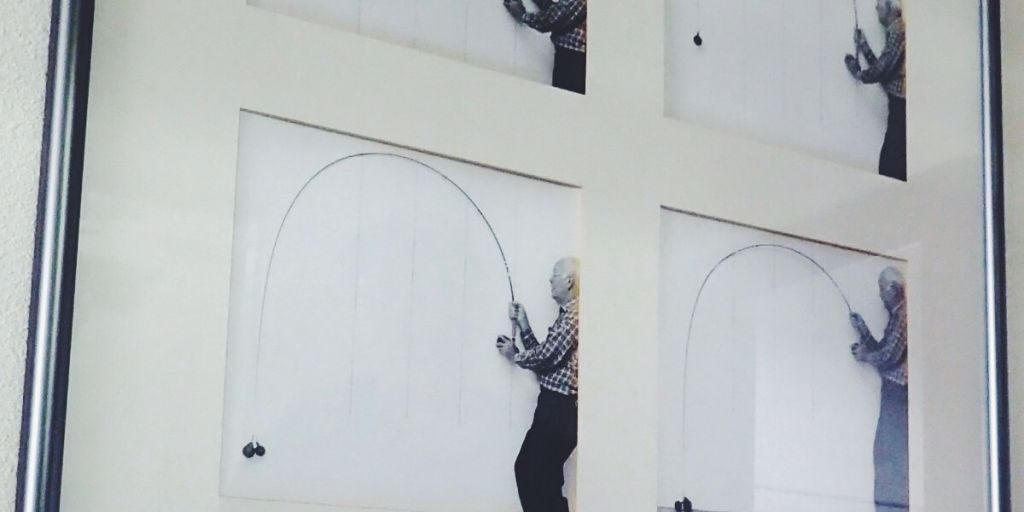


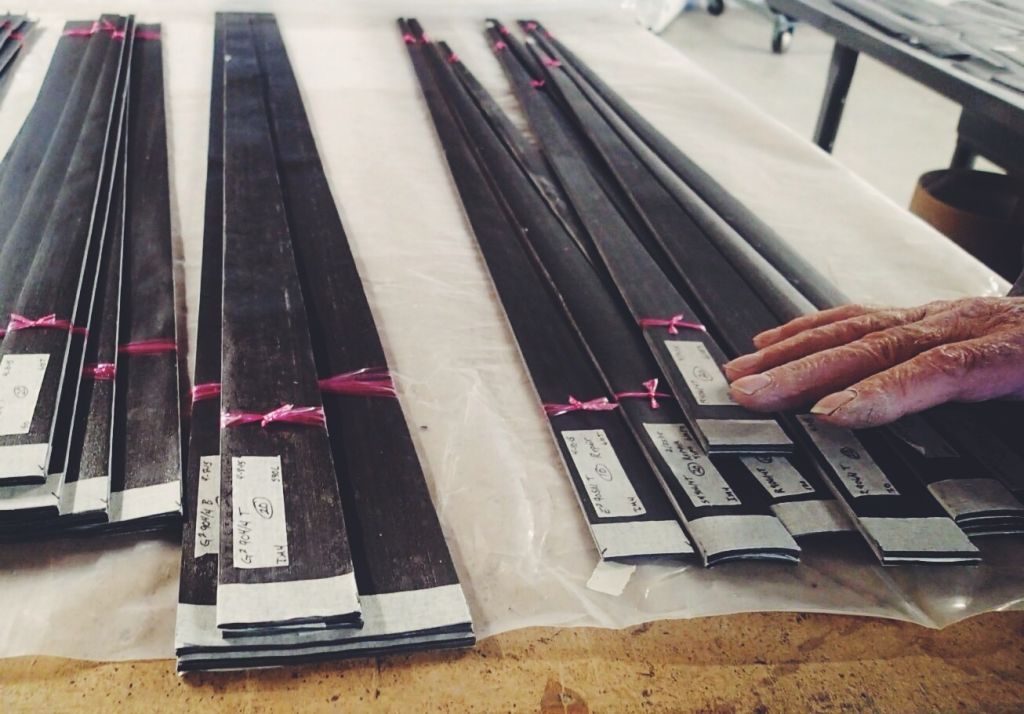
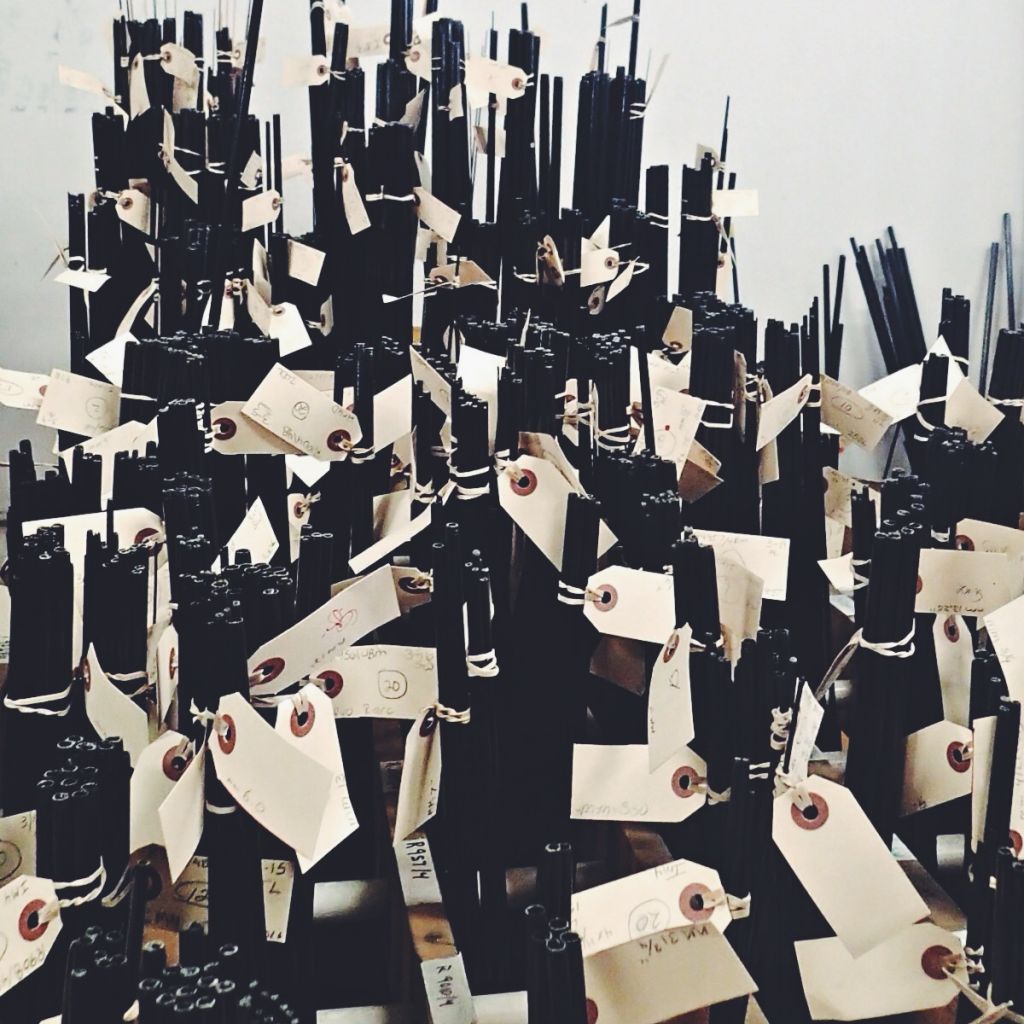
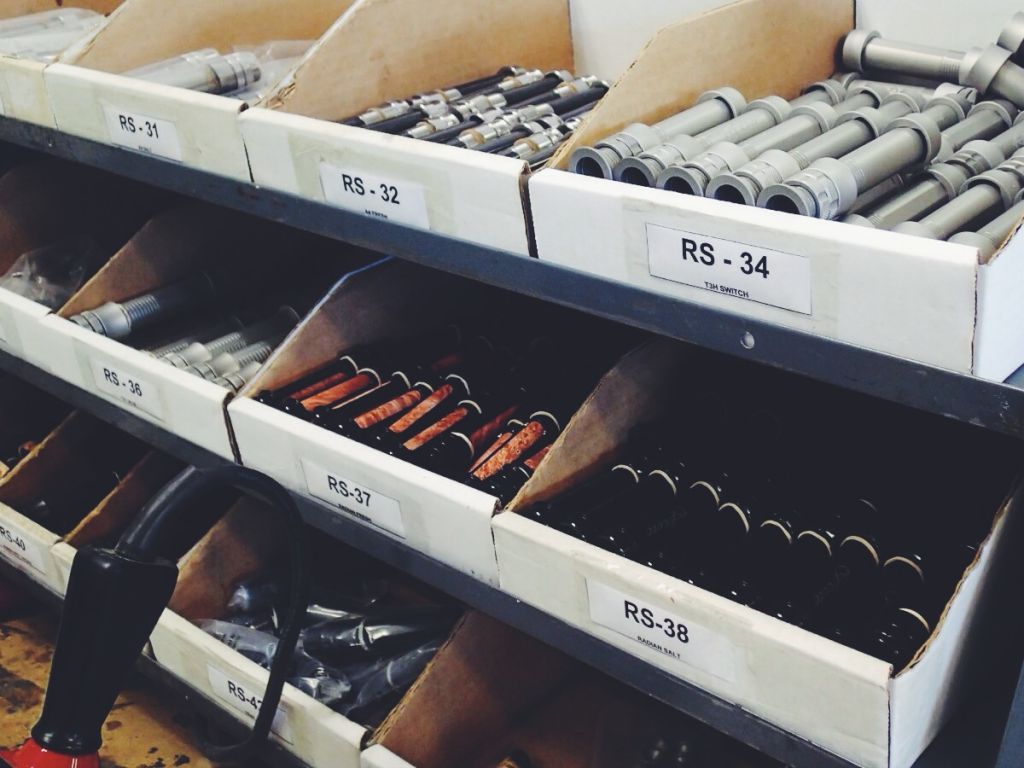
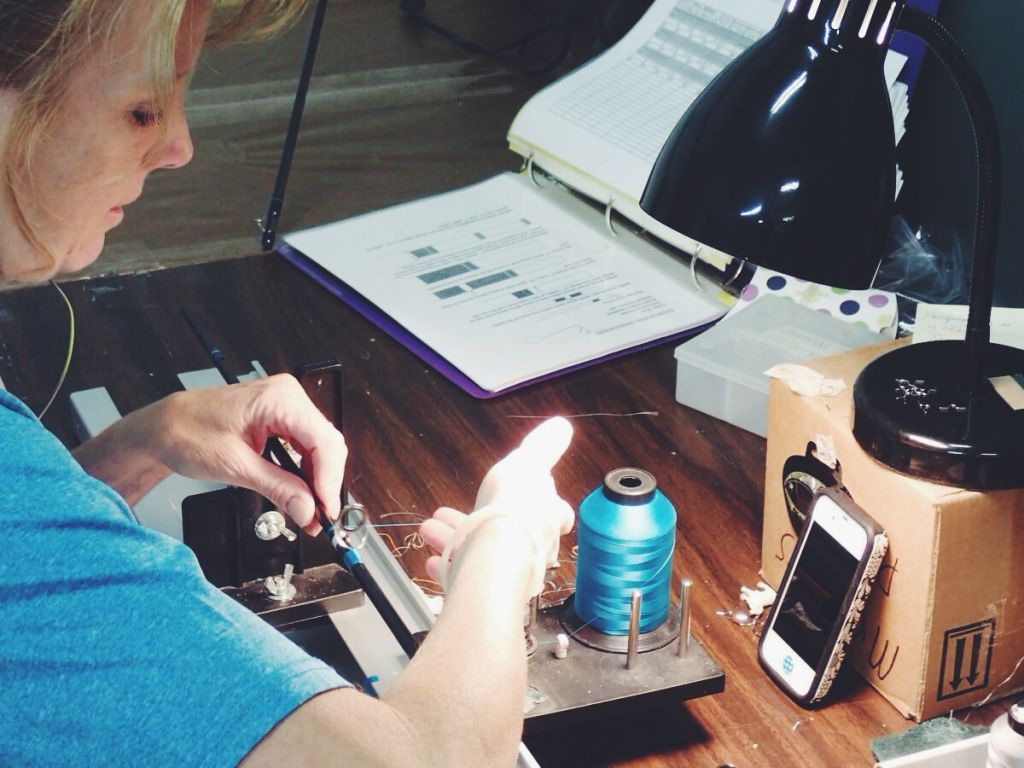
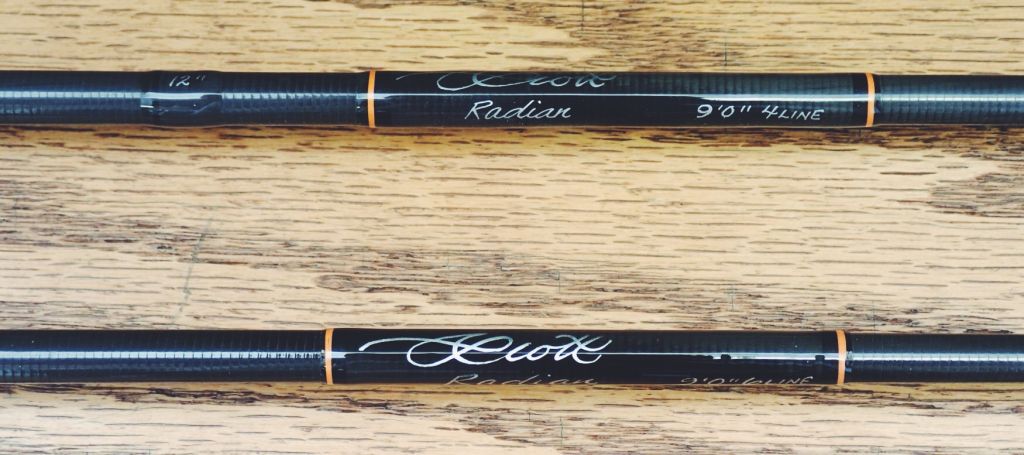






Good stuff Andy. Felt like I was on the tour with you. Although not an owner myself, your wife does make a good point about appreciating the investment in a Scott fly rod. Top notch all the way around. Someday, hopefully, I will be fortunate enough to call a Radian my own… Someday. Until then, at the river I’ll be.
Keep up the good work!
James Walker
Hey James,
Thanks for the kind words and for reading! Scott really takes pride in what they are doing and it was evident all around. Hopefully we will see you on the water!
-Andy McKinley
Hi from The Netherlands.
Your fly shop has been on my radar since the early 1990’s when I was at college and enjoyed reading fly shop catalogs when commuting to classes.
Back to Scott:
I have owned & fished the G2 905 since it came out and it’s the only 5 weight I’ve kept.
Just love the relaxing pace of this rod. My additional fast-ish rod will probably be the Radian.
I like how Scott doesn’t just ‘follow the leader’ (Sage) path and make rods how they think rods should be.
I’m going to follow your blogs and keep enjoying the postings like this.
Cheers!
Greetings from The Netherlands
Hey Jay,
Thanks so much for following us and for the kind words. We appreciate it. The G2 is such a great rod, but Scott did change things up with the Radian. It is a much faster rod, but you are right; they didn’t follow the leader. They built a rod that really cannot be compared to other fast action rods. It’s one we think you will really like.
Thanks and take care!
-Andy McKinley
Duranglers Flies and Supplies